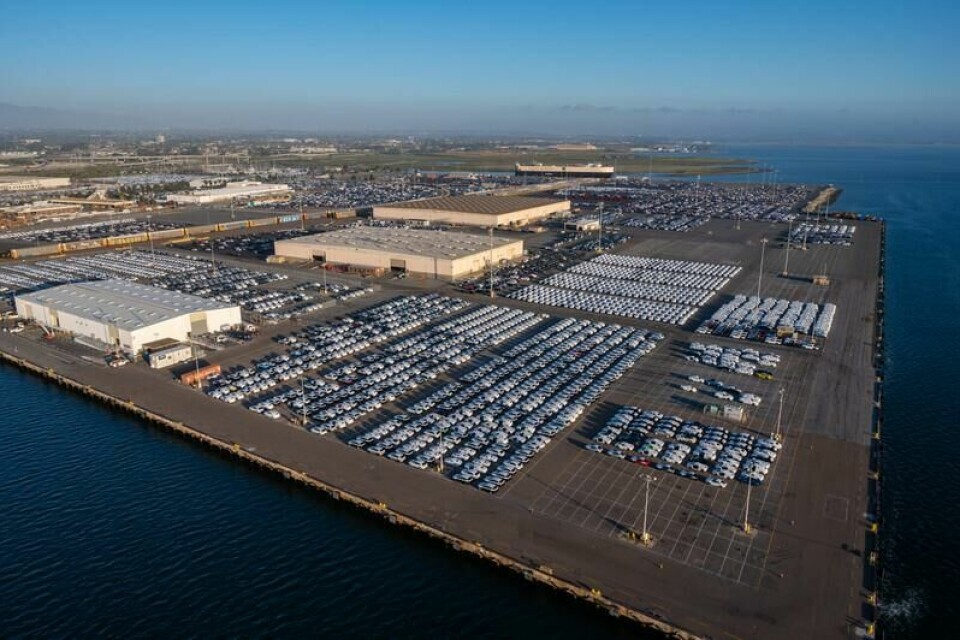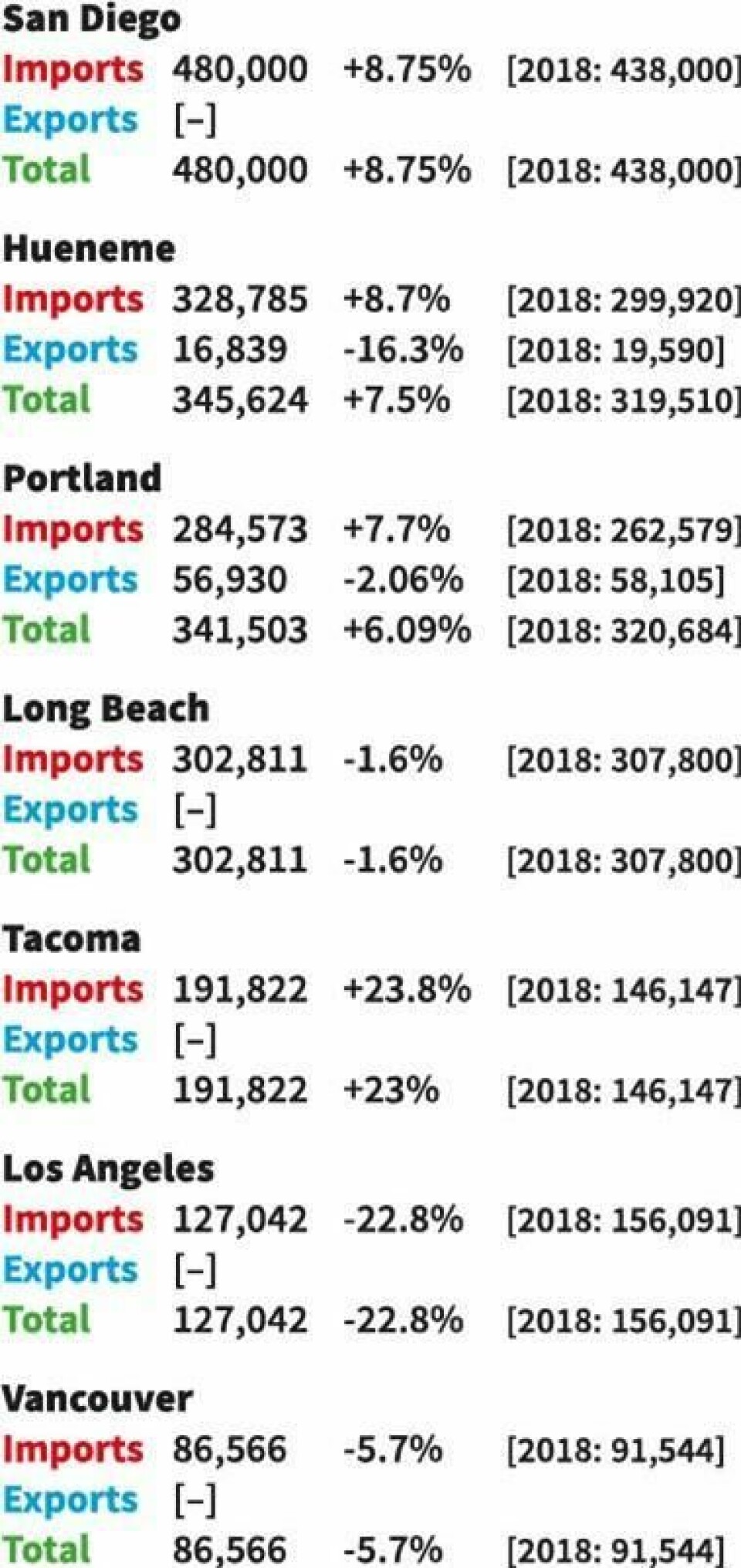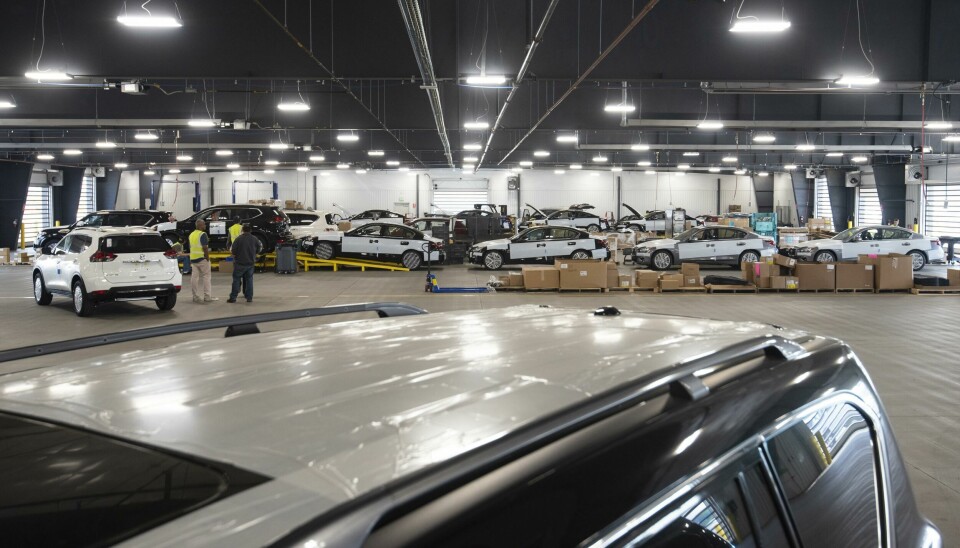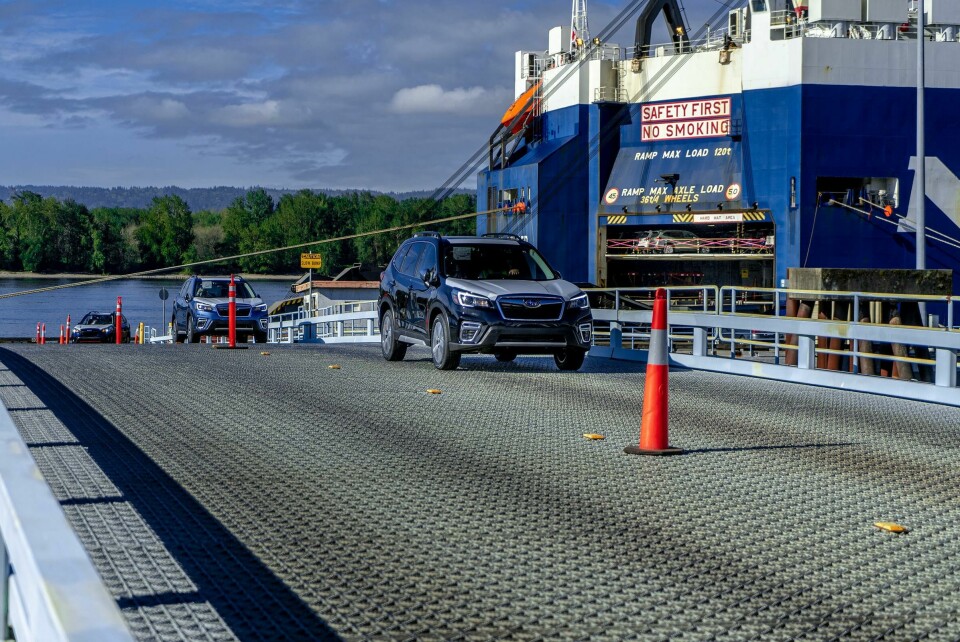Pros and cons on the Pacific Coast
While vehicle dwell and allocation are still challenges for some ports, others are benefitting from capacity gains and stronger rail links, which are helping with increased short-sea trade from Mexico and the build-up of inventory during Covid-19. Marcus Williams reports

The main vehicle handling ports on the US west coast shared some common challenges last year and dealt with them in different ways, but no matter where you were in 2020, the coronavirus pandemic had the same impact on volume throughput and led to a build-up of vehicle inventory.
One growth area for those dealing with short-sea imports on the west coast is the increase in the volume of trade coming from ports in Mexico, notably Lázaro Cárdenas, the busiest vehicle handling port on the Pacific coast.
Mexico is one of the three main markets of origin for imports through the southern-most west coast port of San Diego (Asia and Europe are the others), and volumes from there have been increasing across the brands. As a consequence, San Diego is looking at the greater opportunities available for short-sea imports.
It is similar case at Hueneme, which imported more than 11,000 vehicles from Mexico in 2019, and in April this year Portland added to its Mexican imports with substantial trade from GM.
“Probably the biggest change worth noting is the near-sourcing trend we’ve seen for some time,” says Randy Fischer, senior research analyst at the Port of Portland. “We are seeing fewer autos made in Japan that are intended for the US. Instead, we are seeing more traditionally Japanese manufactured autos coming from production facilities in Mexico.”
In terms of annual value, shipments of vehicles from Mexico through Portland increased from $62m in 2018 to $225m last year.

Trade deals
The signing of the US-Mexico-Canada Agreement (USMCA) in March gave back some security for the continued growth in those short-sea shipments from Mexico, a move seen as positive overall by the west coast ports and by the American Association of Port Authorities (AAPA). The new trade agreement comes into effect as of July 1 this year.
“Signing of the USMCA re-establishes the terms of trade and contains many provisions specific to the auto industry,” says Andre Elmaleh, senior business development manager at The Northwest Seaport Alliance (NWSA), which oversees activity at the ports of Tacoma and Seattle.
What is more significant is the benefit this could bring to trade security and nearshoring of production, according to Elmaleh, especially in light of the impact of the coronavirus on international supply chains.
“It is possible that we may see an acceleration in growth of manufacture of automobile and parts manufacturing in North America (primarily Mexico), as companies try to mitigate supply chain risk by locating closer to the market,” he says. “The opportunity with the potential of more Mexico auto production is to engage in short-sea business.”

Ongoing trade disputes between the US and China, which have been rumbling on for the past three years and have led to an escalation in tariffs on vehicle imports and exports, are also a cause for concern for ports in the US. To take one example, in the middle of 2019, the United States Trade Representative (USTR) turned down separate applications from Volvo and GM to be excluded from a 25% import duty on their Chinese-made SUVs.
“The US-China trade war impacted our customers and the broader finished vehicle market in 2019,” acknowledges Noel Hacegaba, deputy executive director for the port of Long Beach.
The ‘phase one’ agreement between the US and China signed in January 2020 is more of a truce than a substantial trade deal, though that is no less welcome as a means to alleviate damaging uncertainty and as a control on those escalating tariffs.
Land ahoy
As elsewhere in the US, there continue to be challenges and triumphs when it comes to dealing with capacity depending on who and where you are, and in 2019 there were some significant shifts in volumes as carmakers sought more reliable ports of entry.
The port of Tacoma has picked up additional trade because of the available land near its terminals for finished vehicle storage. Its vehicle terminals also have a large amount of rail capacity.
“We were able to receive cargo destined for other ports which would have been delayed if Auto Warehousing Company (AWC) and WW Solutions [which run the terminals] didn’t have the capacity to receive the extra cargo,” says Elmaleh.
He added that Tacoma picked up volumes from European manufacturers, including Volvo Cars, that were redirected on deep-ocean routes operated by WW Ocean from other ports experiencing congestion and those that without adequate storage capacity.
In fact, WW Solutions has permanently moved 25% of the Nissan volumes that were previously going through the port of Los Angeles to its recently developed Taylor Way Auto Facility in Tacoma. WW Solutions has had a breakbulk facility at the NWSA gateway since 1992 but began development of a site at Tacoma (at the old Kaiser Aluminum smelter site) in 2018. It said the move of the Nissan volumes to Tacoma reduced delivery times to the dealers and cut transport costs.
“The Taylor Way Auto Facility was a new growth opportunity that allowed them to establish a foothold here in the Pacific Northwest and serve the needs of their customers and the US auto market,” says Elmaleh.
Last year was a record year for NWSA, with almost 192,000 units handled through the two vehicle processing facilities – Taylor Way and Marshall Way – around 30% up on 2018 volumes. AWC’s facility at Marshall Way has been processing Kia, Mazda, Mitsubishi and GM volumes for several years.
“Work we’ve been doing with our processors to secure new opportunities for the auto business also contributed to that volume growth,” adds Elmaleh.

Allocation and dwell
One of the issues that has been taxing vehicle handling ports in the US over the last few years has been the consumer trend toward bigger vehicles. Bigger vehicles complicate the already complex issues around allocation and dwell at ports: if a particular model is selling well in the US car market, it will be allocated faster and therefore increase the velocity of throughput and decrease the time of dwell.
“The greater impact [in 2019] was the continued erosion of the standard passenger car models as SUVs and trucks continued to dominate and grow market share,” says Joel Valenzuela, director of maritime at the port of San Diego. “This caused slower-moving automobiles to dwell longer, contributing to congestion on terminal.”
The larger vehicles also have an impact on the inland part of the journey because of reduced load factors. The same volume of finished vehicle haulage trucks end up moving fewer vehicles off terminal because of space and weight issues. Similarly, SUVs and trucks require bi-level railcars, which continue to be challenging to source with any consistency in the US, as the majority of multi-level railcars operated in North America are tri- levels for standard size and profile automobiles, according to Valenzuela.
All this contributes to congestion at peak times of throughput.
However, according to Valenzuela, San Diego’s National City Marine Terminal (NCMT), which is operated by Pasha Automotive Services, has been ahead of the curve in transitioning from a marine port to a more complete North American logistics hub, with both inbound and outbound marine, rail and truck volumes.
“This makes overall transport in/out of NCMT more economical and efficient as many transport modes carry cargo both inbound and outbound,” he says. “This also makes the terminal more diversified and less dependent on any one source or country for ongoing business.
Rail capacity
In terms of improving storage capacity and speed of throughput further, San Diego is working on a project called the National City Balanced Plan, which is currently under environmental review. Valenzuela says it promises to improve operations for Pasha through greater rail efficiency using a connector track. The Connector Rail Project is connecting the existing rail and loop track located on the NCMT to additional rail car storage spots at the existing Burlington Northern Santa Fe (BNSF) National City Yard, east of the National Distribution Center.

Hueneme port has also been making improvements with regard to inland connections to speed up throughput by switching some inbound exports from truck to rail.
“[This] has helped our customers get the vehicles here faster while indirectly providing them with empty railcars to load back,” says Hueneme’s spokesperson, Dona Toteva Lacayo. “The increase in empty railcar supply at the port of Hueneme has allowed us to switch inbound product from truck to rail and filled the gap in the multi-level supply.”
Hueneme is also currently working on its 2030 Strategic Plan to help it understand the needs of customers and ensure that future investments are in line with them, such as a parking structure on dock to secure more first point of rest/last point of rest areas for loading and unloading vehicles to and from the vessels at berth.
As well as handling volumes of vehicles for BMW, GM, Hyundai, Jaguar Land Rover, Kia, Mini, Mitsubishi and Volvo, in October 2019 Hueneme celebrated its first year in processing Subaru volumes.
Coping with Covid-19
As with other ports in North America, those on the US west coast have remained fully operational in the face of the ongoing disruption caused to the automotive sector by the coronavirus pandemic. All have done so with increased safety efforts and the implementation of social distancing, amongst other operational adjustments, to ensure the safety and security of employees.
However, the impact on port throughput got worse into the second quarter as dealerships closed and the outbound supply chain seized up. Volumes dropped dramatically in April and May.
“Covid-19 is having a negative impact on all the lines of business,” says Elmaleh of business at NWSA, which saw vehicle volumes drop 21% in May. “We’re hopeful that we’ll see some recovery in the latter part of the year but at this point it is possible we may see double-digit volume declines across all business segments.”
At Vancouver USA, volumes dropped 79% in May on the same month in 2019 to around 1,600 units, having begun 2020 with more than 11,000 moved in January alone. “The onset of the coronavirus and subsequent shutdown of the economy has stopped the import of vehicles temporarily,” says Alex Strogen, chief commercial officer at Port of Vancouver USA.“Vancouver does not expect another ro-ro vessel carrying autos until late second quarter.”
At Hueneme 55% of the port’s revenue comes from vehicle imports and exports and in April volumes were down around 30% based on the same month in the previous year to 76,400. The total shutdown of car plants, not just in the US but globally, has taken its toll on the business, according to Hueneme’s spokesperson.
“We began to be impacted on the decreasing volume of imports as auto plants began to shut down in the Asian and European markets,” says Hueneme’s Lacayo. “The biggest impact was felt at the beginning of May, with our average auto ships calls being reduced from about four a week to approximately one a week, a trend that is projected to remain such through July.”
According to Valenzuela, the Covid-19 crisis had a delayed impact on vehicle ro-ro given vessels those calling at San Diego’s NCMT require anything between a 15-30 day voyage time, meaning existing stock continued to be loaded and dispatched in North America.
“Only after the pandemic escalated to serious levels in Asia and Europe did vessel loading slow down, and in the case of Europe, cease altogether for a brief period,” he says. “NCMT continued to receive a steady stream of inbound ro-ro vessels throughout March and mid-April, which gradually began to slow in late May and June.”

Vessel calls were reduced for four to eight weeks but did not stop altogether as car manufacturing in several Asian countries was not actually halted.
Storage during shutdown
What the slowdown has also meant is that the west coast ports are being used as storage zones and many have come to the aid of their customers.
According to Fischer at Portland, as consumption came to a grinding halt and production lines shut down around the world, port operations were left with a short-term issue of finding space to park cars longer term.
“This triggered the usage of our overflow properties at and near the terminals but we had concerns that more space was needed,” says Fischer. “This involved getting creative. As the Port of Portland, we also operate three airports. We found ourselves converting one of our airport economy parking lots to temporary storage for new imports.”
“We have ensured that during the period of temporary dealership closures we supplied ample storage space for OEM customers until dealerships reopen,” says Valenzuela at San Diego.
The NWSA has a number of properties at the ports of Tacoma and Seattle that can be used for vehicle storage. “We had some initial interest from OEMs that call our gateway and some who do not,” says Elmaleh. “In the end we were able to meet all the space demands within our vehicle processors’ terminals.”
Similarly, Vancouver USA’s ability to quickly designate and prepare sites capable of storing new vehicles was critical in the early months of the crisis, according to Strogen, and Hueneme has been assisting with storage options for vehicles on and off port as needed.
“This is to allow for the local auto processor to work through inventory on-hand and further allow the supply chain downstream to unclog as result of the shutdowns and quarantine,” says Lacayo.





